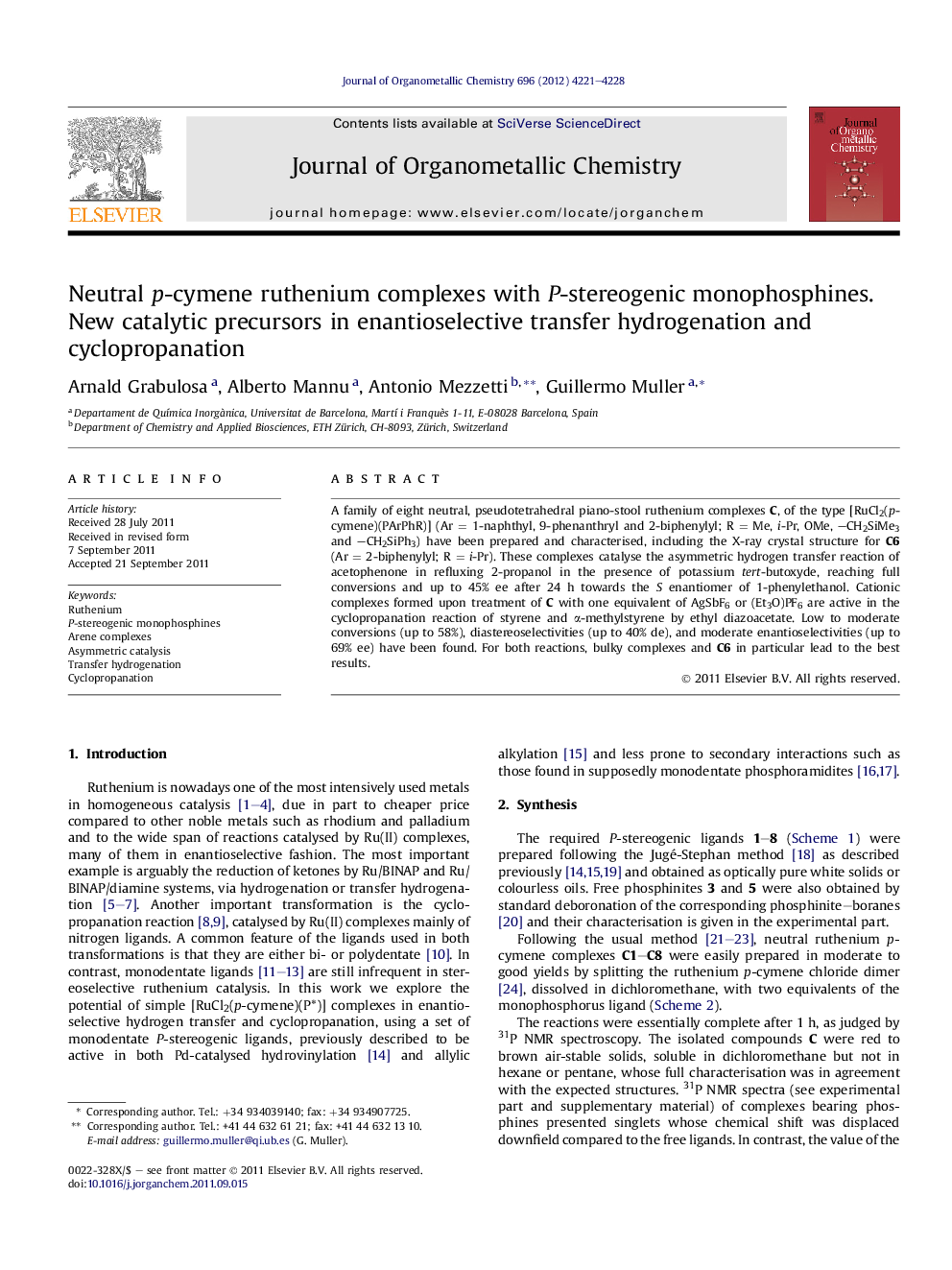| Article ID | Journal | Published Year | Pages | File Type |
|---|---|---|---|---|
| 1326495 | Journal of Organometallic Chemistry | 2012 | 8 Pages |
A family of eight neutral, pseudotetrahedral piano-stool ruthenium complexes C, of the type [RuCl2(p-cymene)(PArPhR)] (Ar = 1-naphthyl, 9-phenanthryl and 2-biphenylyl; R = Me, i-Pr, OMe, –CH2SiMe3 and –CH2SiPh3) have been prepared and characterised, including the X-ray crystal structure for C6 (Ar = 2-biphenylyl; R = i-Pr). These complexes catalyse the asymmetric hydrogen transfer reaction of acetophenone in refluxing 2-propanol in the presence of potassium tert-butoxyde, reaching full conversions and up to 45% ee after 24 h towards the S enantiomer of 1-phenylethanol. Cationic complexes formed upon treatment of C with one equivalent of AgSbF6 or (Et3O)PF6 are active in the cyclopropanation reaction of styrene and α-methylstyrene by ethyl diazoacetate. Low to moderate conversions (up to 58%), diastereoselectivities (up to 40% de), and moderate enantioselectivities (up to 69% ee) have been found. For both reactions, bulky complexes and C6 in particular lead to the best results.
Graphical abstractNovel neutral ruthenium complexes of the type [RuCl2(p-cymene)P∗] where P∗ is a P-stereogenic monophosphosphorus ligand have been prepared and tested as precatalysts in asymmetric hydrogen transfer and cyclopropanation. Large ligand effects have been found for both reactions.Figure optionsDownload full-size imageDownload as PowerPoint slideHighlights► P-stereogenic phosphines with different basicity and steric hindrance. ► Neutral arene complexes [RuCl2(η6-p-cymene)P∗]. ► Asymmetric hydrogenation transfer of acetophenone. ► Asymmetric cyclopropanation of styrene.
